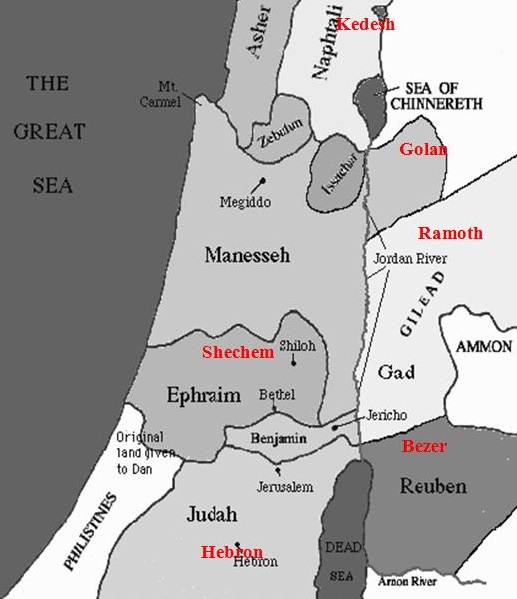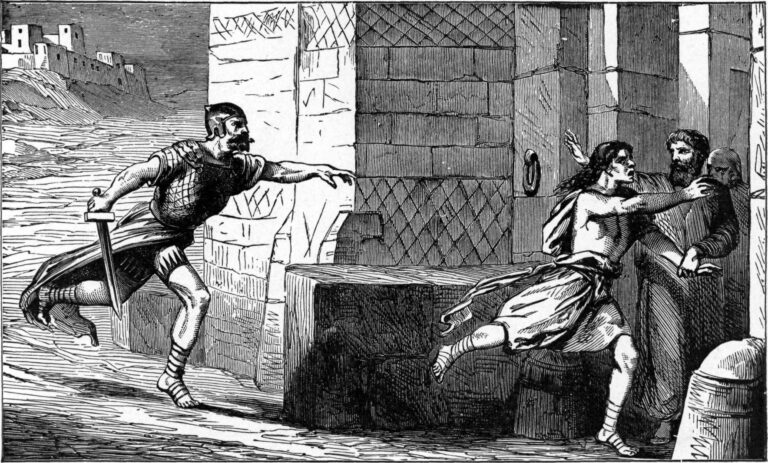The sanctuary cities were part of the distribution of the Promised Land amongst the 12 tribes of Israel. Only one tribe, the Levites, was not provided land to develop. Rather, they were to be the priests of the Lord and the overseers of the tabernacle and all its rites and furnishings. Solely the Levites might bear and establish the tabernacle (Numbers 2:5 -13). As the Levites were to have no provincial domain assigned to them like the other tribes in the conquest of Canaan, they were to be dispersed throughout the land in specific cities appropriated to their usage. Part of their inheritance included forty-eight cities spread out throughout the land (Numbers 35:6 -7). Of these forty-eight cities, 6 were designated as cities of sanctuary. The cities were Kedesh, Shechem, Hebron, Bezer, Ramoth, and Golan (Joshua 20:7 -8).

The Mosaic Law specified that anybody who committed a murder was to be put to death (Exodus 21:14). But for unintended deaths, God reserved these cities to which the killer might run away for sanctuary (Exodus 21:13). He would be safe from the avenger– the member of the family charged with avenging the victim’s death (Numbers 35:19)– until the case could go to trial. The congregation would evaluate to determine if the assailant acted accidentally. If he did, he would go back to the city of refuge and live there safely and securely up until the death of the high priest who was in office at the time of the trial, at which point he can go back to his home. If the assailant left the city of refuge prior to the death of the high priest, however, the avenger would have the right to kill him (Numbers 35:24 -28).
The establishment of those privileged sanctuaries amongst the cities of the Levites is most likely traceable to the concept that the Levites would be the most appropriate and unbiased judges, that their presence and counsels may soothe or restrain the violent obsessions of the blood avenger. By their consecration as priests, the Levites were mediators between the Israelites and God. As such, they would have been blessed to calmly mediate between the assailant and the victim’s household, making sure that no additional bloodshed would happen.

The cities of sanctuary are types of Christ, in whom sinners find a refuge from the destroyer of our souls. Just as the guilty person looked for sanctuary in the cities established for that reason, we run away to Christ for sanctuary from sin (Hebrews 6:18). We run to Christ to escape the danger we are in from the curse and condemnation of the law, from of the wrath of God, and from an eternity in hell. Only Christ provides sanctuary from these things, and it is to Him alone that we need to run. Just as the cities were open to all who ran away to them for safety and security as prophetic evidence for Him, it is Christ who provides safety and security to all who come to Him for refuge from sin and its punishment.
And for how long was the fugitive to remain in the city of refuge? According to Joshua 20:6, “up until the death of the high priest,” after which he was totally free to go back to his home without risk of vengeance or retribution on the part of the dead person’s family.
Does this mean we should stay surrendered to Jesus up until he dies? Certainly not. What is Jesus doing now? According to the Bible, He is making intercession for us, as our Advocate, as our High Priest (1 John 2:1; Hebrews 7:25; 8:1, 2.).
Will Jesus remain our High Priest permanently? No, because one day He will lay off His priestly robes and return to the earth as a conquering King (Revelation 19:11 -16).
The prophetic evidence and wonderful news for people all over is that Jesus is coming quickly! One day the waiting will be over, sin and death will disappear, the “avenger of blood” will be gone, “and so shall we ever be with the Lord” (1 Thessalonians 4:17).
Surely it frequently felt as though the time of freedom might never ever come for the fugitive waiting inside the city of refuge. There have been times when Christians have cried out within their hearts, “How long, Lord, until you return and take us home to be with you?”
Return from “Prophetic Evidence for the Sanctuary Cities Foreshadowing Jesus Christ” to “Prophetic Evidence for The Bible“